Home Blog Presentation Ideas How to Give A Compelling Interview Presentation: Tips, Examples and Topic Ideas

How to Give A Compelling Interview Presentation: Tips, Examples and Topic Ideas

Interview presentations have now become the new norm for most industries. They are popular for sales, marketing, technology, and academic positions. If you have been asked to deliver one for your job interview presentation, prepare to build a strong case for yourself as a candidate.
Giving a general presentation is already daunting. But selling yourself is always the hardest. Spectacular credentials and stellar expertise don’t count much if you cannot present them clearly, which you are expected to do during your interview presentation.
So, let’s prime you up for the challenge. This post is action-packed with job interview PowerPoint presentation examples and will teach you the best way to do a presentation without stressing too much!
Table of Contents
What is an Interview Presentation?
What should an interview presentation look like, how to prepare for a job interview presentation: the basics, define your structure, what slides to include, how to come up with 15-minute interview presentation ideas, how to conclude your interview presentation, how to prepare for an interview: the final tips, what to do at the first interaction with the company elevator pitch for interview, presentation design tips, how to overcome presentation anxiety, tips on maintaining positive body language throughout the presentation, your final act.
An interview presentation, also known as a job interview presentation or interview portfolio, is a formal and structured way for candidates to showcase their skills, qualifications, and suitability for a specific job position during an interview. It goes beyond the typical Q&A format of interviews, allowing candidates to demonstrate their expertise through a prepared presentation. Employers commonly request interview presentations in various industries, such as sales, marketing, technology, academia, and management roles. These presentations serve several important purposes: assessing communication skills, evaluating cultural fit, measuring expertise, analyzing problem-solving skills, and observing presentation skills. While the specific format and requirements of interview presentations vary widely, candidates typically receive guidelines from the employer regarding the topic, duration, and any specific criteria to be addressed. In essence, an interview presentation is an opportunity for candidates to make a compelling case for their candidacy, showcasing their qualifications, experience, and suitability for the job. It requires careful preparation, effective communication, and the ability to engage and persuade the interview panel. A successful interview presentation can significantly enhance a candidate’s chances of securing the desired position.
Think of your interview presentation as a sales pitch.
Your goal is to convince the human resources team that you are the best candidate. The kick here is that you will present to a warm audience – you already impressed them enough with your resume to be called in for an interview. We recommend generating a strategy and presentation based on a 30 60 90 Day Plan .
Employers request interview presentations for a few simple reasons:
- To assess your communication and public speaking skills.
- To understand whether you are the right cultural fit for the company.
- To develop a better sense of how well-versed you are in the domain .
So, your first job is ensuring your presentation fits the criteria. Review the company’s job description again and jot down all the candidate requirements. Take the time to read about their company values and mission. Be proactive and ask precisely what you should cover during your presentation.
Most interview presentations will differ in content and style, but here’s a quick example to give you more context:
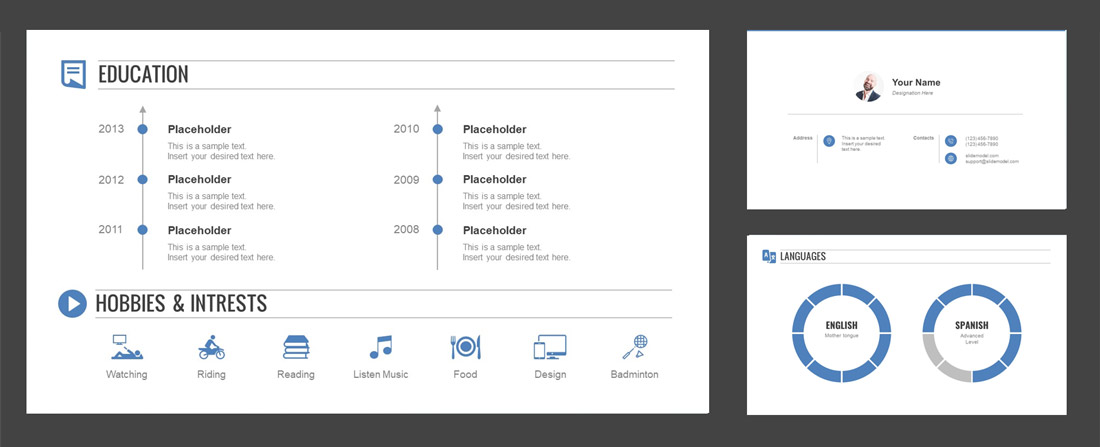
[ Use This Template ]
Before you get elbow-deep in designing that PowerPoint for a job interview presentation, do some scouting and reach out to the HR team with a few questions.
You want your presentation to be on-point and technically accurate, so ask your contact the following:
- How long should an interview presentation be? Fifteen minutes is the golden standard, though some employers may ask to cut it down to just 10 minutes or extend it to 20-25.
- Who exactly will be present? A conversational presentation would undoubtedly be welcomed by your peers and a team leader but may appear too casual for the senior managers or board of directors.
- Does the HR team have a particular agenda in mind? Ask some leading questions to understand what kind of skills/experience they want you to demonstrate. If needed, use a proper agenda slide to include your content.
- What’s the IT setup? Should you bring your laptop? Do you need an adapter to connect to their projector? What kind of presentation software have they installed – PowerPoint, Keynote, Google Slides?
Everyone appreciates clarity.
In fact, 89% of professionals state their ability to communicate with clarity directly impacts their career and income.
Your presentation should flow, not rumble. Make sure that your story is easy to follow and your key message is easy to digest, remember, and pass on. If you want people to retain your main points, opt for the following structure:

Source: this infographic was created with 3 Steps Editable 3D Ladder Infographic
Here’s an interview presentation example styled in this fashion.
What is: The company’s presence in the Middle East is low. Only 15% of revenues come from the top markets.
Why this matters: The UAE fashion market alone is expected to grow at a CAGR of 21% during the next five years.
What could be: I have helped my previous employer open a flagship store in Dubai, have a lot of industry contacts, and am familiar with the local legislature. Your brand can expect a 17% revenue growth within one year of opening.
You can find even more ideas for designing your presentations in this post .
The choice of slides will largely depend on whether you are asked to talk about yourself or present on some task that you will be required to do as part of your job (e.g., create marketing campaigns).
Most interview presentation templates feature the following slides:
- Opening Slide
- Quick Bio/Personal Summary
- Career Path
- Education timeline
- Key Skills and Expertise
- Case studies/examples of the problems you have solved at your past jobs
- Your vision for your future role.
- What exactly can you bring in as the candidate (we will come back to this one later on!)
Can’t figure out where to start? Check out our AI PowerPoint generator to create an entire interview slide deck in a couple of clicks, or just download a job interview template . Swipe down to learn from the either of the following job interview presentation samples.
Typically, a talent acquisition team will suggest broad interview presentation topics for you. For example, if you are applying for a sales position, they may ask you to develop a sales presentation for some product (real or imaginary).
Some employers will request a short presentation about you or your hobbies to understand whether you are a good “fit” for the team and share the company’s values. Remember this: your audience will be assessing your aptitude for the role, no matter which topic you were given.
In fact, the interviewers at this point don’t care that much about your experience and skills. They want to know how you can apply those to solve the company’s pressing problems – meet sales targets, improve ROI from social media marketing or help them earn more revenue.
Your job is to make an educated guess… predict the most wrenching problem, and pitch your “magic pill” during your interview presentation.
I know what you are thinking – but how do I find the right opportunity/problem to tackle?
Businesses across different industries pretty much struggle with the same generic challenges related to either of the following:
Your topic should clearly address one of these areas and offer a potential roadmap for solving some specific problem within it.
Let’s say that you are applying for a sales role. Clearly, you will want to tackle the “customer audience” set of problems. To refine your idea, ask yourself the following questions:
- Can you think of a new customer segment the company should target? Who are they, what do they want, and how you can help the company reach them?
- Do you have a network or experience to identify and pitch new clients?
- Can you think of new collaboration opportunities the company could use to attract a whole new niche of customers?
So a sample job interview presentation about yourself should include a series of Problem & Solution Slides , showing exactly how you will address that issue if the company hires you.
Here’s another PowerPoint presentation about yourself for job interview example worth using – incorporate a case study slide, showing how you have successfully solved a similar problem for your past employer.
Wrap up your presentation by laying out the key steps the company needs to take. Give an estimate of how much time it will take to tackle the problem, and what changes/investments should be made.
Your conclusion should tell this: “Hire me and I will solve this problem for you in no time!”.

Source: StockSnap
Dial-Up Your Power
Take a deep breath and strike a “power pose” before you enter the room.
According to her research, power posers performed better during interviews and were more likely to get hired. Another study also proved this theory: unaware judges gave major preference to the power-primed applicants. So yes, pep talks do work!
The first 30 Seconds Count The Most
What you do and say in the first 30 seconds will make the most impact. Psychological research shows that listeners form opinions about your personality and intelligence in the first 30 seconds of the interview. So be sure to start with a compelling opening, framing exactly how you want to be perceived.
Try To Appear Similar to the Interviewer
Lauren Rivera, a professor from Kellogg School, came to the conclusion that interviewers tend to hire “people like them” .
Even the top human resource management folks fall for this bias and tend to base their evaluations on how similar a candidate is to them, instead of trying to decide whether the person’s skill set is ideal for the position. So to be liked, you will have to act relatable.
Back up your statements with facts
To deliver a presentation with a bang, you can make use of pre-analyzed facts to support your hypothesis. Make sure to do your homework, study the company and its competitive landscape, and do the professional work you would have done as a member of the company crew. At some point in your interview presentation, you go “off the script”, and pull out a bunch of documents, supporting your statements.

For example, you can give away a quick plan indicating a number of things the employer could do today to save money, even if they don’t hire you. Make sure to be meticulous; your work will speak for you. But giving away this work will show the employer your commitment, skills, and focus.
And that’s exactly how to make your job interview presentation stand out. Most candidates just ramble about their skills and past career moves. You bring specificity and proof to the platter, showing exactly what makes you a great hire fair and square.
Within a selection process, there are many interactions (interviews and dynamics) that you must successfully complete in order to be the next selected candidate. One of your objectives in this first interaction should be to generate a great first impression in the company. For this, we recommend using the Elevator Pitch for Interview technique.
The Elevator Pitch for Interview will allow you to present yourself in a solid and professional way in less than 60 seconds, in order to generate an outstanding first impression.
What is an Elevator Pitch for an Interview?
The Elevator Pitch is a condensed speech about yourself that aims to generate engagement in no more than 60 seconds. Entrepreneurs widely use this type of speech to persuade investors and job seekers in job interviews. Your Elevator Pitch for the Interview will generate a great first impression to the employer and be better positioned than other candidates. If your goal is to make a convincing presentation in a job interview, your Elevator Pitch needs to be well crafted.
How to Make an Elevator Pitch for an Interview
There are many ways and tips to make an excellent Elevator Pitch for a job interview. This section provides you with essential advice to make your interview more convincing.
Identify your target
You need to know to whom you are presenting yourself. Is it a recruiter? or an executive?. Your Elevator Pitch will change depending on the receiver.
Comprehend the needs of the hiring company
Make an advanced study about the search requirements for the job position. Identify your strengths. Highlight them. Demonstrate your experience. Identify your weaknesses. Show that you have a profile that seeks constant improvement
Create a clear, concise, and truthful Elevator Pitch
This point is critical. Your Elevator Pitch must be clear, concise, genuine, and impactful. Go from less to more. Generate a real hook in your audience. Try not to go off-topic or talk too much, and be brief in everything you want to say.
Speak naturally and confidently
If you can speak fluently and naturally, you can show a confident profile. Show you know what you are talking about and what you want.
Elevator Pitch Example for Job Seekers
This section illustrates an Elevator Pitch Example targeted to Recruiters. It will help you put together your own.
“My name is [NAME]. After graduating with a degree in Business Administration, I have spent the last five years accumulating professional experience as a Project Assistant and Project Manager. I have successfully managed intangible products’ planning, strategy, and launch these past few years. I was excited to learn about this opportunity in Big Data – I’ve always been passionate about how technology and the use of information can greatly improve the way we live. I would love the opportunity to bring my project management and leadership skills to this position.”
Ways to avoid common mistakes in your Elevator Pitch
Keep in mind the following points to avoid making mistakes in your Elevator Pitch for an Interview.
Don’t hurry to make your Elevator Pitch
The Elevator Pitch lasts approximately 60 seconds. Do it on your own time and naturally, as long as you make it clear and concise.
Do not always use the same Elevator Pitch for all cases
One recommendation is not to repeat the same Elevator Pitch in all your interviews. Make changes. Try new options and ways of saying the information. Try different versions and check with your experience which generates more engagement and persuasion.
Make it easy to understand
Articulate your pitch as a story. Think that the person in front of you does not know you and is interested in learning more about your profile. Don’t make your Elevator Pitch challenging to appear more sophisticated. Simply generate a clear and easy-to-understand narrative, where all the data you tell is factual and verifiable.
Don’t forget to practice it
Practice is the key to success. Your Elevator Pitch for Interview will become more professional, convincing, and natural with practice.
How to End an Elevator Pitch?
An essential aspect of ending an Elevator Pitch for an Interview is demonstrating interest and passion for the position. You have already presented yourself and established that you have the necessary background for the job. Closing with phrases revealing passion and attitude will help reinforce your pitch.
We recommend you use expressions such as:
“I have always been interested and curious about the area in which the company operates, and it would be a great challenge for me to be able to perform in this position.”
“I have been interested in moving into your company for a while, and I love what your team is doing in IT.”
“I would like to advance my career with an employer with the same values. I know that thanks to my profile and experience, I can make excellent contributions to your company.”
Keep It Visual: Use visuals like images, graphs, and charts to convey your points effectively. Visuals can make complex information more accessible and engaging. Consistency Matters: Maintain a consistent design throughout your presentation. Use the same fonts, color schemes, and formatting to create a cohesive look. Practice Timing: Be mindful of the allotted time for your presentation. Practice to ensure you can comfortably cover your content within the time limit. Engage the Audience: Incorporate elements that engage the audience, such as questions, anecdotes, or real-world examples. Interaction keeps the interview panel interested. Use White Space: Avoid cluttered slides. Use white space to create a clean and uncluttered design that enhances readability.
Presenting during a job interview can be nerve-wracking. Here are some strategies to overcome presentation anxiety:
- Practice: Practice your presentation multiple times, ideally in front of a friend or mentor. The more you rehearse, the more confident you’ll become.
- Visualization: Visualize yourself by giving a successful presentation. Imagine yourself speaking confidently and engaging the audience.
- Breathing Techniques: Deep breathing can help calm nerves. Take slow, deep breaths before and during your presentation to reduce anxiety.
- Positive Self-Talk: Replace negative thoughts with positive affirmations. Remind yourself of your qualifications and the value you bring to the role.
- Focus on the Message: Concentrate on delivering your message rather than dwelling on your anxiety. Remember that the interviewers want to learn about your skills and experiences.
- Arrive Early: Arrive at the interview location early. This gives you time to get comfortable with the environment and set up any technical equipment you use.
Maintain Good Posture: Stand or sit up straight with your shoulders back. Good posture conveys confidence and attentiveness. Make Eye Contact: Establish and maintain eye contact with your audience to show confidence and engagement. Use Open Gestures: Employ open gestures, like open palms and expansive arm movements, to convey enthusiasm and openness. Smile and Show Enthusiasm: Genuine smiles and enthusiastic facial expressions demonstrate passion and eagerness. Control Nervous Habits: Be mindful of nervous habits like tapping or fidgeting, which can distract your audience and convey anxiety.
Stop fretting and start prepping for your interview presentation. You now have all the nitty-gritty presentation tips to ace that interview. If you are feeling overwhelmed with the design part, browse our extensive gallery of PowerPoint templates and cherry-pick specific elements ( diagrams , shapes , and data charts ) to give your interview presentation the top visual appeal.
Here you can see some 100% editable templates available on SlideModel that could be useful for preparing an interview presentation.
1. Versatile Self-Introduction PowerPoint Template

Use This Template
2. Professional Curriculum Vitae PowerPoint Template

This a sample of PowerPoint presentation template that you can use to present a curriculum and prepare for a job interview presentation. The PPT template is compatible with PowerPoint but also with Google Slides.
3. Modern 1-Page Resume Template for PowerPoint

4. Multi-Slide Resume PowerPoint Template

Like this article? Please share
HR, Human Resources, Interview, Job, Resume Filed under Presentation Ideas
Related Articles
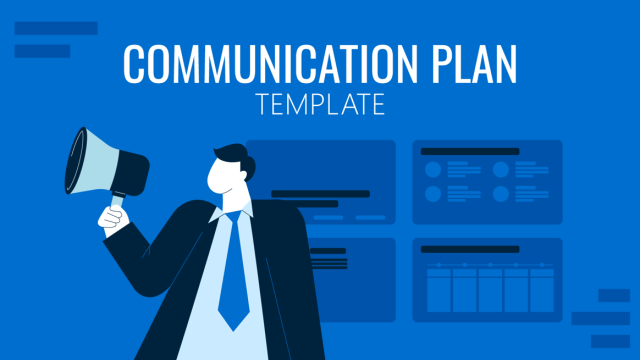
Filed under Business • December 7th, 2023
The Communication Plan Template
Discover why communication plan templates are a key asset for strategic structuring of information in organizations. Learn how to build one here.

Filed under Business • September 8th, 2023
The Employee Value Proposition (EVP) | Key Components and Examples
Employee Value Proposition refers to how organizations are able to attract skilled employees in a competitive job market through the corporate culture, and benefits offered by them. In this article we explore what EVP is and how to formulate a strong EVP.
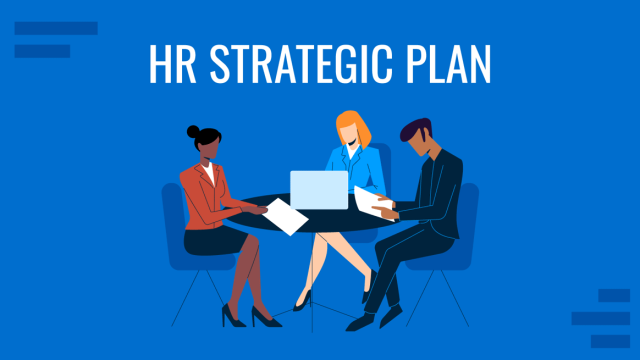
Filed under Business • September 7th, 2023
HR Strategic Planning 101: A Guide for Developing HR Strategies
Learn how your HR strategic plan can support your company in achieving its vision—an expert guide on aligning HR goals and strategies.
One Response to “How to Give A Compelling Interview Presentation: Tips, Examples and Topic Ideas”
Leave a reply.
Interview presentation preparation tips
The interview presentation is becoming more common in the hiring process. It gives employers a better overview of your general aptitude and provides you with an opportunity to showcase your skills, knowledge, and experience. But how should you prepare for an interview presentation? What should you include? What if it goes wrong?

4th Jun, 2021

On this page:
Stay up to date with the latest employer insights & events.
By submitting this completed form to us, you agree to Reed contacting you about our products and services, and content that may be of interest to you. You can unsubscribe from these communications at any time. For more information, please see our privacy policy .
By clicking submit below, you consent to allow Reed to store and process the personal information submitted above.
What is an interview presentation?
As you progress further in your career, particularly to executive level, you may be asked to give a presentation for interview. Perhaps you’ve been asked to conduct research and present your findings to a panel, complete a task and show how you approached it, put together a business plan and present your ideas, or even give a presentation about yourself and how you would excel in the role. Whatever you are presenting about, how you approach it should remain the same.
Many people find giving presentations intimidating, especially during an interview when you’re already nervous, but it’s something that you may have to do throughout your career – the sooner you tackle this skill, the better.
Why are you being asked to do a presentation for a job interview?
Many employers opt for a presentation-style interview as it gives a better overview of your general aptitude when compared to, or combined with, a traditional question and answer interview, like a competency-based interview . The interviewer is looking for proof that you can do the job and that you possess the required skills and traits.
Additionally, if you put time and effort into your presentation, this will highlight to the hiring manager that you are committed to the role and enthusiastic about joining the company. How many times have you been asked in an interview ‘Why do you want this position?’ or ‘What is it about this role that attracted you to it?’. They want to know how much you want this position, rather than just any position.
How to prepare a presentation for an interview
Where do you start? What should you include? The presentation is your opportunity to showcase your knowledge, experience, and communication skills as well as your organisational skills and diligence – so start with the job description and person specification and pick out key skills and traits that the company is looking for. Then you can prepare your presentation around what they want to see.
For example, if the business is looking for someone creative, pay great attention to the style of your presentation. If it is looking for someone who is a confident public speaker, spend more time perfecting your speech. If attention to detail is paramount in the role, double and triple check your spelling and grammar. This is a great starting point and gives you something to build your presentation around.
What to include in an interview presentation
Although you may be tempted to go all out and show your potential employer that you are committed to the job, don’t fall into the trap of creating a 30-slide presentation with reams of text. Try to keep each slide short and significant and aim for no more than 10 slides. This ensures the information you deliver is memorable and will help you to stand out from other interviewees. Some interviewers may even give you a specific amount of time for your presentation, make sure you factor this in and don’t go over the time limit – otherwise you may appear to have poor time management skills.
Another way to make sure your presentation engages hiring managers is to include a range of formats to help you illustrate your points. Include graphs, statistics, diagrams, video clips, and images to help break up large volumes of text and maintain the attention of the interviewers.
If you are conducting research as part of your presentation, include quotes from industry leaders and/or research pieces. This gives your points authority and demonstrates your commercial awareness.
You should also try to incorporate the company’s colours, fonts, or style in your presentation. This will show that you have done your research and highlights your brand awareness.
Finally, check your spelling and grammar thoroughly! Small mistakes can really undermine the content of your presentation.
Tips for presenting at the interview
Presenting is a skill which can be learnt. Even if you are not a confident public speaker, the more you practice, the better you will become.
Present confidently and enthusiastically - Remember to speak clearly, make eye contact, and use open body language.
Don’t just read the slides - There is nothing worse than watching a presentation where the presenter has their back to you the whole time just reading reams of text from their PowerPoint notes.
Try not to talk too fast - Make sure you breathe, and take your time.
Practice, practice, practice - Ensure you are well rehearsed so that you are familiar with the structure of your presentation and are able to deliver it smoothly. If possible, practice your presentation with family members or friends to get used to speaking in front of other people.
Arrive early to give yourself time to set up the presentation and settle any nerves - Get comfortable with PowerPoint and presentation equipment. Make sure you know how to work any projectors, screens, or remote controls before you begin to avoid any awkward stumbles or pauses.
Stay within the allocated time - If you have not been given guidance on length, aim for the 10-minute mark. Time your presentation when you are practising to make sure it will fit within the time limit. If you need to reduce the content of your presentation, cut out the least relevant or weakest points.
Be prepared to adapt - You may have practised your presentation in a certain way, but the interviewer might not respond accordingly. Be prepared to be interrupted by questions or further discussion unexpectedly.
Breathe and try to enjoy it - By relaxing, you will find yourself presenting better and, if you enjoy it, your interviewers will respond to that and be better engaged with what you are saying.
Tips for keeping the interview presentation simple
It can take a lot of work to make something simple, yet effective, and when it comes to interview presentations less is often more. Keep it short - As previously mentioned, try to keep each slide short and aim for no more than 10 slides in total.
One idea per slide - To make sure your presentation is clear and concise, each slide should represent a different point/idea you want to make.
Stick to the important bits only - If you don’t think it’s important enough to spend time on, don’t have it on your slide.
Use the 4x6 rule - Aim for either four bullet points with six words per bullet point, or six bullet points with four words per bullet point. This way, your slides won’t look too busy.
Minimal text - Instead of writing paragraphs of text, use bullet points and a minimum font size of 24.
What's better for your interview presentation? Cue cards or presenting from memory?
Should you use cue cards in your presentation for interview or try to present from memory?
The answer to this question depends on what you feel most comfortable doing. If you find that having cue cards will help ease your nerves and ensure that you don’t forget your speech, then there is nothing wrong with that.
However, if you choose to use cue cards, you should not rely too heavily on them. You shouldn’t stand in front of the interviewers and look down at the cards continuously, neither should you write your whole speech out on the cards and read directly from them. They are cue cards for a reason and should only give you prompts on what to talk about. If your interview presentation has a lot of statistics on, using cue cards to remember the figures if you are unable to memorise them all is an excellent strategy.
What to do when things go wrong
You can practice your interview presentation as much as possible, but something may still go wrong and it’s important to be prepared for this eventuality. Here are some things that could go wrong and how to deal with them: Technical issues
There is not a lot you can do to prevent technical issues, especially if you are using someone else’s computer. But there are ways you can prepare just in case. Ensuring you have access to multiple sources of your presentation is key. Email the file to yourself and the recruiter, bring a copy on a USB stick and printed handouts. This way you are covered if anything goes wrong with the file you’re intending to use.
Your mind goes blank
Even those who are pros at presenting can sometimes lose their train of thought and find that their mind goes blank. The key here is not to panic. If possible, take a bottle or glass of water in with you and use this chance to take a sip, breathe and try to relax. Then look at your presentation slide or your cue cards and pick up where you left off. It may be helpful to repeat the last point you made as saying it out loud could spark your memory for your next point.
You are asked a question that you don’t know how to respond to
If you have allotted time at the end of your presentation to allow the interviewer to ask any questions (which is recommended), don’t worry if someone asks a question that you are not sure on. It may be that the interviewer is looking to see how you respond to a challenging question, so how you react is often more important than the answer itself.
If you do not understand the question, ask the person to explain. There is nothing wrong with doing this and shows more confidence than just saying that you don’t know. If you understand the question but are not sure of the answer, then admit that you don’t have the full answer, provide what information you do have, and offer to come back to them at a later date with a complete answer.
10-minute interview presentation template
Below is a presentation for interview example. Use this as a baseline and adapt or reorder where appropriate based on the task you have been set by the interviewer. Slide 1 - Introduction – Reiterate the objectives you have been set and lay out the structure of your presentation so that the interviewers know what to expect. Slide 2 - About you – Detail your professional experience, skills and working style. Slide 3 - Company history – Give a brief summary of the company history, any milestones or awards. Slides 4-7 - Answering the brief – Give your responses to questions you’ve been asked to answer, the benefits and limitations of your suggestions. Slide 8 - Question and answers – Include a slide titled ‘questions and answers’ as a cue to pause for interaction. Slide 9 - Conclusion – Sum up the key points you have made, reach a decision, and explain your reasoning. Slide 10 - Personal achievements – End the interview on a high with a brief slide highlighting achievements that show how you will succeed in the role.
For more information on how to ace your interview, download our free guide, ‘ Getting the best from your interview: Candidate interview tips and tricks ’, or contact your local recruitment specialist today.
You may also be interested in...

Getting the best from your interview
The interview is about presenting yourself as the best candidate for not only the position, but the company. Our handy guide will take you through some simple steps to make sure you do just that.

The eternal optimist - winning with an attitude of gratitude
Former England sevens Captain and current PwC Director, Motivational Speaker, Coach & Founder of Optimist Performance, Ollie Phillips, gives you an insight into becoming an ‘eternal optimist’.

How to prepare for a second interview
How to write a covering letter. The bane of many people’s lives. But it really doesn’t need to be. Follow our simple tips and yours will stand out from the crowd.
Frequently Asked Questions
A job interview presentation is all about selling yourself. Be confident, speak clearly, and make eye contact with the interviewer. Don’t be afraid to promote yourself and highlight your achievements. This is your chance to really show the interviewer that you are capable and have the necessary skills to do the job. By putting time and effort into your presentation, you can show them how dedicated you are to the role and the company. For more information on how to ace your interview, download our free guide, ‘ Getting the best from your interview: Candidate interview tips and tricks ’.
Using cue cards can support you with your interview presentation, as long as you use them for their intended purpose. Do not write your entire presentation for interview out on cards and read from them word for word or constantly hold them in your hand and fail to make eye contact with the interviewer. Use them only to prompt you or for remembering key facts and figures. For more tips, read our article on ‘interview tips & questions’ .
If you have been sent a presentation brief that you do not understand – don’t panic. If there are words that you are not sure about, do some research and try your best to figure out what the organisation is asking of you. If you are still unsure, you could ask your recruiter as they may have seen this brief before and can give you an idea. If you are dealing directly with the hiring manager, then it may be worth checking that your interpretation of the brief is correct.
It is better to ask the question than present on something completely different to what the interviewer has asked. However, instead of saying to them that you don’t understand the brief and leaving it at that, tell them your understanding of it and ask if this is correct. This will show that even though you are unsure, you have taken the time to try to come to a conclusion yourself before asking for help. Download our free interviewing guide for more tips and advice.
How long your job interview presentation should last depends on what guidance you have been given. Thoroughly read the brief, as the recruiter or hiring manager may have specified the length of time you have for your presentation. If they haven’t given any indication, you should aim for 10 minutes, including time for questions and answers. For more tips on interviewing, read our article on ‘interview tips & questions’ .
Find a Reed office
Our national coverage allows us to offer a recruitment service taylored to your needs, with accurate local market intelligence on salaries, competitors and the best professionals who can help your business thrive.

7 Tips to Acing Your Interview Presentation
I like building and growing simple yet powerful products for the world and the worldwide web.
Published Date : December 7, 2020
Reading Time :
Introduction
An interview presentation is a short, persuasive presentation that an interviewer can ask you to deliver in lieu or in addition to a sit-down interview. Your interviewer may ask you to prepare an impromptu presentation on the day of the interview, or you may have some days to prepare.
Interview presentations allow employers to assess your skills and determine if you will fit into the organization well. I have several tips and examples that will help you ace your presentation. But let us look at the proper interview greeting etiquette first.
How to greet an interview panel
Interview etiquette demands that you greet every staff member you meet at your interview location, from the receptionist up until you meet your interview panel. When you get to the interview panel, you have to walk up to them with a smile. Give them an individual handshake and a ‘ Good Morning .’
Image address
How should you introduce yourself in an interview?
After greeting the interview panel, you have to introduce yourself. Ensure you have a prepared greeting or check out some interview presentation templates to sound professional before you go for the interview. State your full name, educational background, and skill. It can go like this,
“ My name is Robert, and I’m a Marketing graduate here for the digital marketing associate role. I have a strong background in digital marketing, and I would love to become a valuable member of your team .”
How to introduce myself with a presentation in an interview
When you have to give an interview presentation, the first thing you should do is introduce yourself. The introduction for a job interview presentation can be more detailed than that for a regular interview, and it should lead to the next part of your interview presentation. You can find several interview presentation templates online, such as,
“ Good Afternoon. My name is Robert, and I’m a marketing graduate with over two years of digital marketing experience. I’ve always been passionate about digital marketing and finding smarter ways to promote a brand. I have developed strategies for so-so brands and helped increase their brand visibility by 15% in 2 months. I’m here to talk about how those strategies can benefit this organization in a so-so way .”
What are the best interview skills?
1. research.
One of the things employers look out for in an interviewee is their research skills. You should show them how well you can research and how prepared you are for the interview presentation. Sometimes, they can test you by asking you questions about the company that you would only know if you had put in the effort before attending the interview presentation. You can find such questions in many interview presentation templates online.
2. Verbal and written communication skills
You require excellent verbal and written communication skills to succeed in your interview presentation. Verbal communication skills allow you to deliver your presentation in clear, concise words without depending on a crutch. Interviewers also look out for your ability to enunciate, speak confidently , and convince with your words. If you use an interview PowerPoint presentation, you need good written communication skills in your slides.
3. Non-verbal communication skills
Body language , gestures, and body management are important communication tools that tell much about you and your thoughts. You need good body management and maintain the right posture for confidence and optimism. Your body language and hand gestures can also signal your confidence , nervousness, and excitement, so you must use them correctly.
4. Soft skills
Soft skills include communication skills, people skills, personality traits, emotional intelligence, and social skills that show how well you relate. You need these skills to fit into the work culture, so the interviewers will look out for those skills they consider important.
5. Ability to perform under pressure
One of the employers’ top requirements is the ability to perform under stress and supervision. Many interviewers use the job interview presentation to test you for those abilities. How you prepare and deliver your interview presentation within a limited time can inform them of your diligence, efficiency, and intelligence level. You need to double-check everything and make sure you deliver an excellent presentation to remove any doubt about your abilities
6. Organizational skills
Organizational skills are highly sought-after, but they are notoriously difficult to recognize. Different organizations have their requirements, so you may not know exactly what they need. Still, you must show as many organizational skills as possible, including time management, planning, efficiency, creative and critical thinking, attention to detail, and problem-solving skills.
How to improve my interview skills
You may not have all the required skills for your interview presentation, but you can always develop them with some effort. Some of these skills are general skills you should have regardless, like verbal and written skills . While some of them are specific to the role for which you applied.
You can find several interview presentation ideas and tools to help you improve those skills. There are also interview presentation templates, samples, and ideas that are creative enough for you to adopt for your benefit. With some practice and determination, you can develop any skill you need.
1. Focus on your topic
When giving your ideas and topics, you must have the main one to base the presentation on. Usually, the interviewers give you a few topics to choose from so you can choose one to deliver confidently. Keep on track, and don’t go too far off your point.
2. Give your presentation a structure
Every interview presentation needs a structure that follows from start to finish. Your presentation’s structure gives it a clean, defined look that, in turn, makes you seem efficient and organized. Also, when you have a structure, keeping track of your delivery is easier.
3. Do your research
Once again, research is important if you intend to leave a lasting impression on your interview presentation panel. Your research has to cover the topic of your interview presentation, the position you’re applying for, and the company you want to hire you.
4. Go along with the time limit
Interview presentations usually have a time limit, especially if multiple people are present on the same day. You must stay within the time limit and avoid getting cut off in the middle of your speech . Time management is important so you don’t skip out on any important points.
5. Use a ‘less is more’ approach
When delivering a job interview presentation, you have to keep in mind that quality trumps quantity. It would help if you kept your job interview presentation as concise as possible, leaving room for questions at the end. Also, your slides should be understated and simple, with each slide containing one simple message. Keep the number of slides to a minimum.
6. Study your audience
Studying your audience is essential because it lets you plan your interview presentation around their needs and expectations. Job interview presentations for entry-level staff and senior positions usually have different audiences and interviewers, so you can’t use the same interview presentation templates for both.
7. Keep your interviewers engaged
Your job interview presentation should not be a one-sided lecture where you load your interviewers with more facts. You should aim to engage them throughout the delivery and always keep their attention on you. Make your interview presentation ideas exciting and interesting so they don’t get bored halfway through it.
How to start your presentation
- Start with an icebreaker.
Interview presentations are usually professional and impersonal, so you can start with an icebreaker to lighten the mood and get your audience interested. Try starting with a personal story , an interesting fact, or a thought-provoking question.
- Speak for a short while without your slide.
Your presentation slide should be an accompaniment, not the main part of your interview presentation. So, try introducing your presentation first without your slide to give yourself a head start.
- Introduce your topic with a visual aid.
Using visual aid to introduce your presentation is a great way to begin your slide and immediately grab people’s attention. You can prepare a title slide with an image, infographic, or video introducing your presentation topic.
- Use appropriate props
To avoid boring presentations, you can incorporate some Interview presentation ideas creative enough to blend well with your topic while entertaining your audience. Props are great for creating conversations and getting people involved with the presentation.
- Engage the panel with an activity.
The activity doesn’t necessarily have to be physical. You can get them to ask questions, begin a discussion, and answer a few of your questions. Your aim should be to keep your interview presentation as engaging as possible.
How to end your presentation
- Summarize your message on a final slide.
End your presentation with a closing slide summarizing your main points and focus message.
- Give an oral summary with a final word.
Also, summarize the presentation orally and end it memorably. Some interview presentation ideas creative enough for your ending include asking an open-ended question, tying your ending into a memorable quote , or ending with an impactful call-to-action.
- Reiterate why you want to work in the company.
Remember to do this without sounding too desperate. Some better interview presentation ideas that are creative enough for you are to make them see what they will miss by not hiring you and clarify that you have fresh ideas for the company.
- Encourage questions
As usual, open the floor for questions.
How to crack an interview presentation
- Use a presentation tool
You can create a great PowerPoint presentation to help you with your presentation. Create some slides and, if possible, some handouts for your audience. Visual aids are also important when delivering an interview PowerPoint presentation. It would help to have them highlight your key points and get your interviewing panel’s attention.
- Know what to expect beforehand.
Before you proceed with your interview presentation, you need to find out as much as possible from your hiring manager. Ask questions about the topics you have, the panel of interviewers, and every resource you will have at your disposal. More information can help you prepare good interview presentation ideas.
- Land a great delivery.
No matter how good your interview presentation is, if you don’t have a good delivery, you won’t make a good enough impression on your interviewer. To ensure that your delivery is good, practice the interview presentation well and, if possible, get feedback that will help you make the necessary adjustments.
- Create an outline
Your interview PowerPoint presentation must always have a structure. Don’t go in with the expectation of winging it because mistakes can harm your hiring chances. Create a proper interview presentation template, and make sure you follow the outline.
- Practice the interview first.
Ace your interview by practicing with Orai
What is the best way to impress the interviewer?
1. be yourself.
As redundant as this may sound, many people still walk into interviews, acting out a script that they think will endear them to their interviewers. They don’t know that people can usually spot a fake, which can make it difficult for the panel to warm up to them.
2. Dress appropriately
Your dress announces you the moment you walk into your presentation and is the first thing your interviewer will judge. Ensure that you are wearing appropriate attire and that you look put together. No stray threads and hastily worn outfits will gain you a point during this interview presentation.
3. Arrive early
As I mentioned earlier, punctuality is a great way to show your efficiency and organization. Always arrive at the interview at least 10 minutes early. If your interviewers have to wait for you, you won’t earn any points in their book.
4. Show your passion for the position
While interviewing candidates, most interviewers look for those they believe will take their positions seriously. While you don’t want to seem too eager, you can show your passion for the job through your interview presentation. Tell them what you can bring to the table, which will grab their attention.
5. Carry a physical copy of your resume
Many applications happen online, so carrying along some physical copies of your resume may seem unnecessary. But you always have to be ready for any eventuality. You might refer to the document, or an interviewer might ask for a copy, and you don’t want to look unprepared if that happens.
6. Be polite
Politeness and courtesy are traits you always want to use in an interview presentation. Apart from good life skills, they can endear you to your interviewers. Treat them all with respect, even the staff who greet you outside.
7. Always mention what you can do for the company
As you give your interview presentation ideas, always mention your skills and background. Tie your presentation to your previous achievements and the skills you bring. Also, address the position requirements every chance and make them see why you are fit for the job.
8. Come prepared for the interview questions
You should always prepare for the interview presentation questions you expect from the interviewer. The interviewer will likely want to know how much you know, so you should check out interview presentation templates to find relevant interview presentation questions. You will leave a good impression on your interviewers if you answer them brilliantly.
9. Answer your questions brilliantly
At the end of your presentation, your interviewers will likely ask you a few questions concerning your presentation and judge you based on the quality of your answers. You want to answer those questions excellently and leave no doubt in their minds that you’re fit for the position.
10. Be memorable
Interviewers likely hear several interview presentations daily, so you must do something to make yourself stand out. Do you have a unique skill? A hobby? Find ways to leave a lasting impression after your interview presentation. After the interview presentation, you can send a follow-up email or note to ensure they don’t forget you.

Interview Do’s and Don’ts
What is the 5/5/5 rule in presentation design.
The 5/5/5 rule in presentations keeps things simple: 5 words per line, five lines per slide, and five consecutive text-heavy slides max. This forces conciseness , clarity , and visual appeal, preventing information overload and boosting audience engagement. Remember, less is often more!
What are some common mistakes to avoid in interview presentations?
Nail your interview presentation by avoiding these pitfalls: Be punctual, research the company, dress professionally, keep past employer talk positive, come prepared with documents and practiced answers, project confidence with good body language , offer concise and clear responses, and showcase achievements humbly to avoid sounding arrogant. Remember, first impressions matter!
Why is providing solutions to common issues important in an interview presentation?
Involve solutions in your interview presentation! It shows you’re a problem-solver, not just a talker. Addressing company challenges demonstrates your resourcefulness and proactive thinking, making you stand out and showcase your potential value to the team.
How can discussing industry trends in an interview demonstrate knowledge and relevance?
Discussing industry trends in your interview presentation proves you’re more than qualified. You’re proactive and strategic. It shows you stay informed, think critically about the future, and understand how trends could impact the company. You’re not just in the know but prepared to lead the way.
Why is it important to share weekend activities during an interview presentation?
Don’t just talk skills; share your life! Weekend activities in your interview presentation show you’re more than a resume. They reveal your personality, values, and even team spirit. It helps the interviewer see if you’d fit in and add positively to the company culture. Think well-rounded and engaging!
How can candidates stand out from a pool of competitive candidates during interviews?
To ace your interview, plan your presentation, highlight achievements, share personality tidbits, discuss industry trends, and offer solutions. Be authentic and creative, and leave a lasting impression with a hard copy (if relevant). This will set you apart and show you’re more than just another candidate!
What are the best presentation ideas for interviews?
Nail your interview with a killer presentation! Plan well, showcase achievements, share personality glimpses, discuss industry trends, offer solutions, be creative, and stay authentic. Hand out a hard copy for an extra touch. Stand out, impress, and land the job!
What topics should be covered in an interview presentation to impress hiring managers?
Own your interview with a presentation that wows! Start with an attention-grabber, connect personally, and use visuals & activities to stand out. Summarize powerfully, show genuine interest, and invite questions. Be smooth, confident, and well-prepared with a clear structure and practiced delivery. Shine through with authenticity, professionalism, and passion. Highlight your value, answer questions like a pro, and be unforgettable. Research, dress sharp, exude confidence , and you’ll leave a lasting impression that lands you the job!
Why is providing a Hard Copy of the interview presentation beneficial?
Don’t be caught resume-less! Even with online applications, always bring physical copies to your interview. It shows preparedness, helps you reference info, and avoids tech troubles. Be ready, be professional, and land the job!
An interview presentation is a great way for an employer to know more about you, assess your skills, and see if you fit the role. This is your chance to impress them, and several interview presentation ideas are creative enough to impress an interview panel in this article. Know them and apply them to your other interview skills.

You might also like

How Many Words is a 5-Minute Speech

Good Attention Getters for Speeches with 10+ Examples!
Quick links.
- Presentation Topics
Useful Links
- Start free trial
- The art of public speaking
- improve public speaking
- mastering public speaking
- public speaking coach
- professional speaking
- public speaking classes - Courses
- public speaking anxiety
- © Orai 2023
- International edition
- Australia edition
- Europe edition

Eight tips on how to make your interview presentation shine
Excellent communication is a key skill in any role. To find the best candidates, employers may ask you to present your ideas
- How to prepare for weird interview questions
- What to wear for a job interview
- Looking for a job? Explore the range of vacancies on Guardian Jobs and find the perfect role for you
Today, 89% of global professionals believe that communicating with clarity directly impacts their career and income , so with the high number of candidates vying for jobs, it is more important than ever to feel confident about sharing or pitching ideas – particularly in pressurised interview scenarios.
As you face the interview stage, it’s increasingly likely that an employer will ask you to visualise your achievements and skill set in the form of a live presentation. Sales, marketing, public relations and teaching are just some of the careers which often request that candidates prepare a presentation to deliver live during the job interview. While you should not expect to give a presentation for entry-level jobs, they are becoming a staple in more senior roles across industries. If presenting and clear communication are part of the job role, there is a strong chance that you may be asked to provide a flavour of what you can do.
It is easy to feel overwhelmed by the prospect of presenting at a job interview, and even a little intimidated. Creating a dynamic and engaging presentation that effectively communicates your ideas is often easier said than done, and this is a frequent frustration shared by jobseekers when applying for roles. It is not just sales professionals that are required to update their CVs and make them more visually compelling and memorable. Presentations are necessary for a wide range of industries, including fashion, graphic design, education and financial services.
Regardless of the job you are applying for, candidates are keen to make their presentations both memorable and engaging. However, many often fall at the first hurdle and overdo it by creating an extraneous deck of long static slides. But don’t fear – there is a wide range of alternatives now available that can help even those with limited technological skills get their point across and dazzle their interviewer.
Here are eight expert tips on how to make your ideas shine through preparing and delivering a world class presentation:
1. Brainstorm without borders
From the outset, it is important to set aside time for brainstorming. Running your ideas past a friend or partner is a useful way to gain a fresh perspective, but you may find you need some additional help from elsewhere along the way. Many cloud based presentation software packages allow real time collaboration between users online, so ideas can be shared instantly and inspiration can be gained from the work of others across the globe.
2. Choose the right technology
It is important that you choose a mode of presentation that you can operate with ease. You can make the ideas flow better by keeping the work in a platform or programme that guides the entire process, from preparation through to presentation. However, make sure you take care with appearances – there are a range of tools that are certain to impress more than the tried and tested traditional style of PowerPoint, and different programmes reflect different skills.
For example, PowToon is a free animated presentation software that may be best put to the test by animators or graphic designers. Another option is Prezi, an online tool which offers a 3D open canvas for presentations. For a more simplified version of PowerPoint, Google Drive Presentation allows multiple users to view or collaborate on the document online.
3. Have a clear structure
Structure can go a long way to boost your confidence and ensure you give a stellar performance. Make sure from the outset that you have a clear understanding of each of the relevant sections of the presentation. Each part of the presentation should naturally follow from the other. Introduce the subject: tell the audience what your presentation is about. Explain the points you wish to convey. End with a summary of your points.
4. Rehearse
Rehearsing is essential to feeling energetic on the day. Find what works best for you: speaking out loud to yourself in the shower, snatching up presentation tactics from Ted videos or familiarising yourself with your presentation over and over. Keep it short and sweet. Remember to check with your interviewer if they’d prefer to keep the presentation open to questions anytime, or save them until the end.
5. Learn to channel nervous energy
Be wary of becoming too animated – waving hands can distract from your idea. The key is to relax but stay alert. Remaining calm, composed and confident in your delivery will help keep your audience’s attention on the content.
6. Talk naturally
Reading words off static slides is nobody’s idea of an exciting presentation. Prepare in advance and talk to your audience in a conversational (but not too chatty) tone. Even though the floor is yours, think of the presentation as a two-way conversation as your interviewer is following your chain of ideas.
7. Make eye contact
Connecting with your audience is essential to retain their interest. Once you start making eye contact, it will also make the presentation more comfortable for you – you can feel that you are truly part of an exchange of ideas.
8. Answer questions honestly and concisely
This is your chance to gauge the interest of your interviewer and explore knowledge and ideas that you could not fit into the presentation. However, if you don’t know the answer to a question, it is perfectly fine and even appreciated to say so, and offer to provide further information at a later date.
The key to effectively communicating ideas is translating them into a narrative that captivates or persuades your audience. For inspiration, go online and learn from others who do this well. There is no harm in using online resources to collaborate on a global scale.
Drew Banks is head of international at Prezi .
Looking for a job? Browse Guardian Jobs for your next career step.
- Guardian Careers
- The Careers Blog
- Applications
- Work & careers
Comments (…)
Most viewed.

Ace the Presentation

What Makes a Good Presentation For a Job Interview? 7 Tips
Interview presentations are fast becoming a key part of the recruitment process as several hiring agencies are making it a mandatory exercise for short-listed candidates.
It would seem that many employers are getting more interested in employees with impressive communication skills, which, when hired, can be positively used to represent their brands.
As a job seeker, however, you’ve nothing to be worried about as interview presentations can actually be used to your advantage if you know what hiring panels or employers are constantly on the lookout for.
Revealed below are the seven elements that make up a good presentation for any job interview.
- Understanding
- Excellent Communication Skills
- Organizational Skills
- Proper Time Management
67% Of Applicants Failed To Make Eye Contact With The Interviewer 47% Knew Little Or Nothing About The Company 38% Did Not Get The Job Due to Their Overall Confidence Or Quality Of Voice 38% Lacked A Smile 26% Were Eliminated Due To Weak Handshakes 21% Of Interviewees Crossed Their Arms Over Their Chest
Depending on the company and the role you are applying for there could be a number of topics they can ask you to make a presentation on, if you’d like some ideas with topics, please check our article below with over 50 ideas for job interview presentation topics .
Highly Recommended Next Articles to Read:
55 Job Interview Presentation Topics
10 Dos and Don’ts for Job Interview Presentations
9 Tips on How to Deliver a Case Presentation Interview
Good Presentation For a Job Interview: 7 Key Aspects
When making presentations, confidence is one quality you should never do without.
Yes, it’s absolutely natural to get nervous and jittery before a presentation. After all, you’re going to be the center of attention for some time, and everything you say or do will be thoroughly scrutinized.
However, on no account should this affect your delivery, as your confidence (or lack of it) is a strong evaluation point for your audience.
Believe it or not, your hiring panel wants you to succeed. If you passed the first stage of the recruitment, then they must have found you promising.
They want to see you speak about your ideas with great conviction and without fear. They want to believe you’re right. But how can they do that if you won’t look them in the eye and keep second-guessing yourself the whole time?
An excellent way to build confidence is good preparation and constant practice. Do a mock presentation with your friends and have their feedback. Keep practicing, and you’ll get over the anxiety and speak with great conviction.
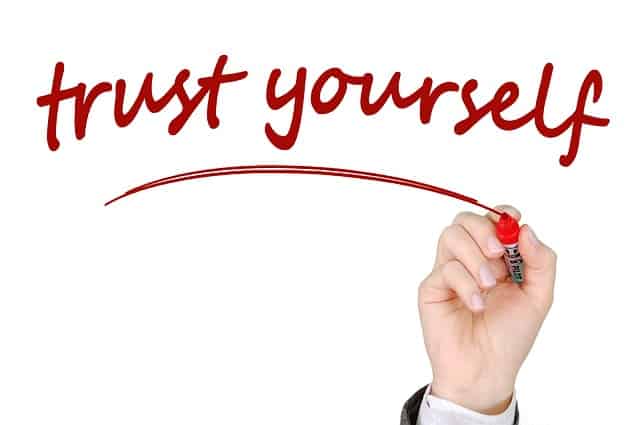
Another important thing that can determine the outcome of your presentation is how passionate you are about it.
Showing apathy during presentations reveals a lack of interest. It gives the audience the idea that you really don’t know what you’re talking about.
For a good presentation, you need to be passionate about your ideas. Bring your points to life by expressing genuine enthusiasm as you address them.
Delivering your presentation with high energy will guarantee three things:
- You’ll inspire trust because they’ll realize that you know your onions.
- You’d capture the audience’s attention because your presentation is interesting, and you’re a joy to watch.
- Finally, energy is transmissible. As a result, when you are passionate about your idea, you’re likely to stimulate an equal level of interest in your listeners.
Going for a presentation without adequate preparation is a futile endeavor. Furthermore, it’s disrespectful to the interviewer who prepared their time to listen to you and learn about you.
Whenever you have a presentation in view, it’s expected that you learn everything you can about the topic. You need to research extensively to be fully prepared.
This high level of preparedness will give you leverage during your presentation as your great understanding of the topic would become immediately visible to your audience. Look up articles, read journals and compare facts from credible references.
Have an in-depth understanding of the company you’re hoping to work for.
Some examples of questions to know the answers for your Job Interview Presentation
- What is their mission statement?
- How long have they been in the market for?
- What ground-breaking records have they had in recent years?
- What is their competition?
- What policies can be adopted to ensure lasting change?
These and more are possible questions that’ll point you in the right direction when doing your research.
Strive for knowledge. Don’t just memorize facts; an informed audience can always tell.
Carl Kwan’s video on how to ace a job interview presentation is the shortest and most interesting advice shared on Youtube – 3 golden tips to put you on the right track. Click and check the video below.
- Excellent Communication Skill
Your hiring panel somehow believes that delivering your presentation should come easy to you. They expect you to have the words naturally flowing from you and not having them rushed through or read out like a script. This is how they know you can efficiently represent their company in business meetings with clients.
In your delivery, you should also ensure that you maintain eye contact with the audience. This helps to foster rapport and build connection.
Looking everywhere else but at your audience shows you’re unsure of your convictions and intimidated by their scrutiny. Which is the last impression you want to convey.
To ensure that your presentation is memorable, resist the urge to memorize sentences. Instead, speak from your repertoire of acquired knowledge of facts, your well of understanding.
Speak with precision. You should also pace yourself, do not rush through your presentation as though you can’t wait to get done with it. Pause for impact. Be at ease. Smile. As you do, you’ll find that most of the fear is all in your mind.
- Great Organization Skill
When designing your slides, your organization should come to play. There should be a layout or structure your points should follow, else your message becomes all muddled up, and you lose your audience.
To avoid that, you should strive to keep your presentation slides simple, less wordy, and more visual.
Your points should connect and be credible (keep references handy). That way, your audience can easily understand what you’re saying as you move along.
A concise message well delivered is a vital part of a good presentation. What message are you trying to pass? Is it clear?
Are you on topic or just trying to look cool?
A good presentation should be able to pass a concise message. Else, it’s a fruitless attempt. Identify a clear message for your presentation, then build your points around it. That way, it is clear to you and your audience what your presentation is about.
When delivering your presentation, one crucial thing to factor in is time. You aren’t going to be on the stage forever, so you need to manage your time effectively while you’re there.
Distill your message to cogent points so that you’re able to focus only on what’s important. Make sure you work strictly with the allotted time and not run over it.
Keeping to time and working strictly within the stipulated duration shows that you’re a responsible individual who can make judicious use of resources no matter how limited they may be. And this is the kind of impression you want to make.
Job interview presentation is a crucial part of the recruitment process that can mar one’s chances of getting the job if not delivered successfully.
Thankfully, it could also be that one thing you will ever need to set you apart from other job seekers. Understand what makes a good presentation, and you will never again worry about delivering one.
REFERENCES & FURTHER READING
JobMonkey. 9 Reasons Why your Failed the Job Interview
Similar Posts

Body Language and Gestures – 5 Great Tips for More Effective presentations
Introduction to Body Language / Mannerisms/ Gestures Body language in simple terms can be explained as those nonverbal signs we give off in our day-to-day communication with one another. This can range from anything from facial expressions to simple body movements, small but crucial subconscious actions that make up much of our non-verbalized interactions. Language…
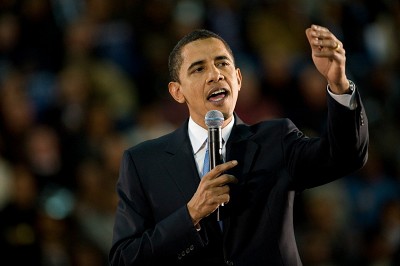
5 Speeches Considered Best in History: A lesson to Communicators
A great speech remains in the minds of those who listen to it and can make history. No matter how much time passes, some lines are eternalized – for different reasons. The ones highlighted in this article were no different. Times Magazine is known for its “Best of All Time” lists of best movies, music,…

What Makes A Bad Public Speaker? Top 10 Worst Traits To Avoid
An audience will always give apt attention to a public speaker that keeps his message clear, simple, and easy to comprehend. Besides, nobody likes a bad public speaker and would want to waste their precious time under the logos of a boring orator. Below are ten carefully selected traits or qualities that make a bad…

Diction – A Key Rhetorical Device and Staple for Speakers
Language is quite a peculiar thing, don’t you feel? We all use it every single day for one thing or the other, but we’re pretty sure few of you stop and ponder about what kind of words you use, how you use them, and whether they’re having any impact on your audience. This is where…

Rhetorical Questions Definition: 3 Types and Examples
Most often than not, an answer is usually regarded as the complementary part of a question, and both are generally said to go hand-in-hand. But when it comes to rhetorical questions, the rule seems different, especially as no answer is required when a rhetorical question is asked. So, what then is a rhetorical question, you…
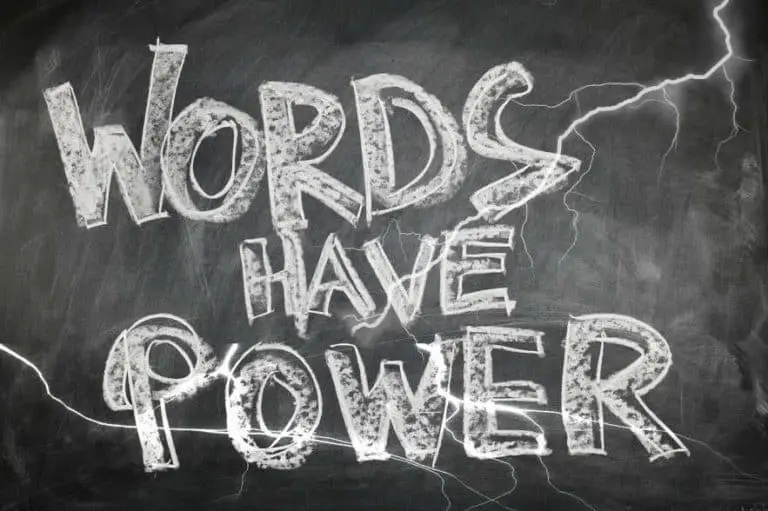
8 Awesome Persuasive Speech Techniques & Topics
Are persuasive speech techniques worth learning? Let me rephrase this…Would you love to be able to convince, inspire, change peoples’ minds about something? Alternatively, perhaps you would like to bargain better and become a powerful negotiator in your business, sales efforts, salary negotiation, fundraising, and so on? Let me help you: The answer (s) is…
Government agencies communicate via .gov.sg websites (e.g. go.gov.sg/open). Trusted websites Trusted websites
Look for a lock ( ) or https:// as an added precaution. Share sensitive information only on official, secure websites.
4 minute read
6 Tips for Making a Great Presentation During an Interview
Need to create a presentation for a job interview consider these tips to tackle the process confidently and land the job..

Job interviews are already stressful, but being asked to do a presentation in front of the hiring panel can take your anxiety to the next level. While this request is more commonly asked of candidates interviewing for senior and executive positions, don’t be surprised if your next potential employer wants to use this interview process to assess your skills.
So, what can you do to ace the presentation and secure the job? Fortunately, there are no shortage of ways to deliver a succinct and compelling business plan that showcases your knowledge, professionalism and communication talents. Here we provide quick tips that help you prepare for the big day and leave an unforgettable first impression .
1. Establish the brief
Candidates asked to present during an interview should get some time to plan their speech around a specific brief. However, if the person conducting the interview hasn’t provided all the essential details, confirm how the process will be completed, including the topic, time constraints, available multimedia devices and the attendees.
It’s important to realise that following the brief is part of the assessment process, so if you’re asked to stick to a 10-minute time limit, make sure you don’t overshoot or fall well below. Once you’ve determined what the interview involves, start planning a presentation that amazes the audience and positions you as the ideal candidate for the job.
Want to increase your chances of nailing the job interview? Learn effective job search strategies, enhance your personal brand, and more with Career GRIT. Register for our Virtual Seminars today!
2. Create a structure
Creating a presentation with a logical structure makes it easier to get your ideas across. Rather than shifting sporadically from one concept to the next, a thoughtful framework communicates your ideas clearly and intuitively.
Naturally, the best place to start is an introduction. Start by establishing the stakes and highlight how your solution delivers a tangible difference. Then, build a narrative that includes personal anecdotes and insightful statistics. This should capture how your experience and talents support the organisation’s goals.
3. Enhance visual aids
Your presentation visuals shouldn’t be one that your interviewers can simply read off from. They need to support what you’re saying so that the focus remains on you. This means toning down on wordy slides and leveraging more visuals to explain your points.
If you’re describing some insightful research that captures the crux of your argument, showing a graph of this data on-screen can highlight why it matters to your conclusion. You could even create visual comparisons of products or statistics to establish your point in a more intuitive way. Making use of transitions can also elevate your storytelling.
Meanwhile, you can produce these same slides as printed documents to hand out to the audience ahead of your presentation.
Use these career tips to help increase your chances of landing your next job role on MyCareersFuture. Start applying now!
4. Rehearse your presentation
It sounds simple, but not enough people spend adequate time actually practising their presentation. Your idea might outshine that of other interview candidates, but if you don’t hit the mark with your delivery, there’s a good chance the hiring panel won’t fully appreciate the significance of your speech.
You need to stay within the allocated time limit, so practise how fast you need to talk to get through your entire presentation. If you’re racing to reach the end in time, refocus your speech on only the most essential parts. Practise with friends or family members to strike the perfect balance, and seek their feedback on where you can improve.
5. Prepare to adapt
While you must practise your presentation to deliver a commanding presence, the hiring panel might attempt to throw you off your rhythm. When creating your presentation, anticipate where people might raise questions . This can help you prepare responses that show you’ve considered the argument from every angle.
Get your friends or family to interject during your practice sessions with provocative questions. By learning how to keep your composure, answer questions and get back on track, you will come across as a high-level communicator.
6. Nail the small details
After you’ve finished creating your presentation, work on perfecting the minor details. Although we’ve already covered the need to speak at a carefully considered pace, you should also remember to make eye contact and use open body language to convey a confident mindset.
The more prepared you are, the smoother your presentation will be. On the day of the job interview, arrive early to set up your presentation. Bring spare batteries for remotes, check if your tech tools work as intended and give yourself time for a final review.
By preparing for your interview presentation with ample time and effort, you are sure to give a memorable presentation that highlights your best skillsets.
Related topics:

Interview Preparation: Your Guide to Answering Leadership Questions
5 minute read

Fighting Fires at Work: A 3-Step Guide to Professionally Manage Workplace Conflicts
3 minute read
Quick share
Enjoyed reading this? View other related articles below:
Tips for new entrants joining the workforce
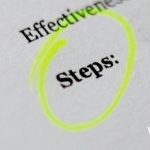
First Time Looking for Jobs? Read This Beginner’s Guide
2 minute read

Honesty in Interviews: Here’s Why it Matters

Feedback: Why You Should Ask for It
Advice for managing your mid-career development

3 Things Not to Say When Negotiating Salary for a Mid-Career Switch

Worried About Reaching Your Career Goals? Here Are Some Tips for Singapore’s Broad Middle Workers (PODCAST)

4 Positive Work Habits for Your Mental Well-being
Insights for mature workers to stay relevant

Career Confessions: What Retirement? He Chose to Embark on a Career Switch in His 60s!
14 minute read

Jobs to Consider in the Second Half of Your Career for Mature Workers, and the Skills You’ll Need

Knowledge Sharing: How and Why Guiding Younger Colleagues Benefits Your Career
Home / 6 Tips for Making a Great Presentation During an Interview
Find more jobs like these at MyCareersFuture Job Portal

An initiative by Workforce Singapore
Whether you are a fresh graduate searching for a new entry-level job or a seasoned veteran considering a career switch, Workipedia by MyCareersFuture is the one-stop website for all your job application needs.
- Google Slides Presentation Design
- Pitch Deck Design
- Powerpoint Redesign
- Other Design Services

- Guide & How to's
How to create and give a great presentation at a job interview?
A job interview presentation can be your own initiative or the company’s requirement for meeting with HR or a recruiter. In both cases, it is your chance to demonstrate your mind, approach, and skills from your vacancy perspective. Additionally, a quality and attractive interview PowerPoint presentation shows your ability to analyze, talk, explain, and persuade. If you’re a designer, you should make a pitch on colors, fonts, and other visual components. If you are a sales manager, you should concentrate on numbers and better send a presentation design to the agency.
If you feel you can rely on yourself, we’d like to share some tips on how to make a presentation for an interview and present it confidently.

Slides to Include in an Interview Presentation PPT
The zero advice here is to include only the most relevant details and facts of your biography. If you apply for a manager position, mentioning psychology as a hobby will add points. However, if you apply for a programmer, there is no need to show your rewards in ballet or box.
To begin with, aim for one slide per minute. If given 10 minutes, try to contain 10 to 12 slides. Let’s outline some basic slides in your presentation for the interview ppt.
All these slides cover a simple 3-stage presentation structure:
- Introduction: tell them what you’re going to tell them.
- Middle: tell them.
- End: tell them what you told them.
Slide 1: Welcome the audience.
Welcome people to your presentation by introducing them, saying what you will cover, assuring their comfort as observers, and asking them to leave all questions until the end.
Slides 2-3: About me (education, past jobs, courses, skills).
Slides 4-5: What I can do for you (the reason to apply, strengths, previous achievements).
Slides 6-7: Why I can do it (skills, solutions).
Slide 8: Summary.
Some positions allow including slides about hobbies or some interest outside the work, but we suppose that depends on the seniority of your position and its type. If those interests strengthen your skills required, add them but briefly.
Tips to Improve Your Presentation for Interview
Research the company.
The first interview presentation tip is to personalize slides for the company’s industry and their latest challenges/news/issues. What kind of products and services do they sell? You adjust your expertise to the company’s current problems showing how your skills impact and contribute as soon as they hire you. However, we advise not adding these references to every slide because it may look obsessive.
Know yourself
The second tip to ace your interview presentation slides is to know your strengths. You can list dozens of certifications, but how do they really work and help in practice? Name advantages related to the company. Tell the audience what you have done and can do to assist the company in current challenges. For example, you’ve researched the company’s goals to achieve, and you should focus on those strengths that complement these aims.
Present with PCS format
PSC is an abbreviation meaning Problem, Consequences, and Solution. For example, you start the presentation by identifying a company’s problem, continue with the consequences they face without your expertise, and end with the clear solution you propose to overcome the problem. The solution shouldn’t be perfect, but this approach shows you’re a creative problem-solver.

6 C’s to Consider to Give Top-Notch PowerPoint Presentation for Job Interview
Psychologically, you need to do a couple of preliminary things to recognize what interviewers are looking for in the first place. Let’s review what they specifically search:
1. Communication
They will look at how you communicate, articulate, or are cohesive and smooth. Not only slides but words coming out of your mouth must make sense.
2. Carry yourself
They will notice whether you’re enthusiastic, energetic, polished, professional, persuasive, etc. For example, if you apply for a senior position, the interviewer will definitely consider if you can give confident pitches or arguments.
Are you comfortable with this entire environment? Is it easy for you to be present? People who interview dozens of candidates easily read your comfort or discomfort level by analyzing body gestures: how you click the clicker, look at the slides, bite lips, change voice tone, react at the interruption, etc.
4. Construction of presentation
It is more than just an outline structure, and it is about whether the person is going through a cohesive story with all the necessary information and prepared slides. It is about the packaging you must put together from PowerPoint or Google slides , a deck, handouts, etc.
It is the biggest key of the whole meeting. Sure, presentations are about introducing yourself, but the insight, information, and sequencing will cover the most time.
6. Compelling
You’ll often need to make a persuasive argument for the audience to see it as a good “deal” and you as a profitable “offer” they want to buy. Don’t consider it offensive but aren’t you selling your expertise and time, right?
To get the offer, you need to know what they want to give something valuable. People make mistakes when they think about their personalities while creating slides. The right approach is to consider the company’s needs when compiling skills, adding certifications, and listing advantages. Don’t waste anyone’s time 🙂
If you consider our tips, you know now how to give a good interview presentation. It is all about focusing on the company’s current needs or challenges. If you use this perspective, you’ll look like a more valuable candidate interested in the vacancy and able to propose solutions to real problems and ways to achieve current goals. Companies will never kick off individuals who know their strengths, communicate confidently, and show sincere interest in the company.
#ezw_tco-2 .ez-toc-widget-container ul.ez-toc-list li.active::before { background-color: #ededed; } Table of contents
- Presenting techniques
- 50 tips on how to improve PowerPoint presentations in 2022-2023 [Updated]
- Keynote VS PowerPoint
- Types of presentations
- Present financial information visually in PowerPoint to drive results

How to write a resume presentation: tips and tricks from experts

- Design Tips
How to make a presentation interactive

Inspiration for PPT: how to find design ideas
Our range of over 180 online courses are fully accredited, trusted by more than 2 million learners and ideal for training you and your team.
- Food Hygiene
- Health and Safety
- Safeguarding
- Asbestos Awareness
- Fire Safety
- Mental Health
- Health and Social Care
- Business Essentials
- Team training

Welcome to the Hub, the company blog from High Speed Training.
Select a topic to find the most up to date, practical information and resources produced by our experts to support you in your professional life.
- Health & Safety
How to Start a Presentation for an Interview
Interviews can be really tense situations. Throwing a presentation into the mix only adds to that pressure. What can you do to ease those nerves and start your presentation in a calm and confident manner? How can you captivate your audience and help assure them that you’re the right candidate for the job? This article outlines a number of useful tips to guide your interview preparation and address these important questions.
Preparing a Presentation – Where to Begin?
If you plan your presentation in advance you’ll increase your likelihood of success. Make sure you know what type of message you want to convey and think about the most effective way to deliver this message.
Ready? Take a look at our six preparation tips below.
1. Tell a personal story
Presentations can often be over-professional, impersonal affairs. But they don’t have to be.
Adding a storytelling element to your presentation can ensure that your delivery is both down-to-earth and professional at the same time, which will make your presentation a whole lot more engaging overall.
Think of any personal experiences of your own that are applicable to the content of your presentation. Do you have anything of value that could aid the delivery and help with engagement?
Example: Say you have an interview for a HR role at an international corporation HQ in the city. You’ve been told that you need to deliver a presentation on how you manage conflict in the workplace (we’ll use this example throughout).
By opening with a relevant story of your own about a time when you successfully and diplomatically resolved a conflict outside of the workplace – at home, or wherever it may be – you’ll:
- Demonstrate your competency in this area
- Ease any tension that is characteristic to the situation
- Capture your audience’s attention with an account that can only be delivered by you – making it unique and remarkable
- Openly display your personality and values, enabling the employer to make a better informed selection decision – beneficial for everyone involved

2. Use media
Starting your presentation can be the most difficult bit.
You’re tongue-tied, stumbling over words and your heart is beating so fast.
Give yourself the opportunity to collect yourself by using some form of media early on in the presentation.
Begin your presentation with a quick introduction to who you are and what the presentation is about (use a title slide and a ‘What I’ll cover’ slide, for example) and then incorporate a media break.
Use video, music, an infographic – whatever, as long it’s suitable and on-topic, use any form of media that allows you to have a breather and recover from that all too familiar fear of public speaking.
Example: so here we are again – biting your lips and fumbling with your hands as you wait to open your presentation for the HR role.
Your presentation is on conflict management, a fairly sensitive topic, which you’ll want to get right. But don’t sweat it; simply introduce yourself and your specific presentation details/content, then bring in an attention-consuming piece of useful media.
In our case, it could be a funny clip of workplace conflict from a TV Program such as The Office* – this will lighten the mood and create a talking point. You’ll be back in the driver’s seat, and you’ll be surprised by how quickly those nerves calmed down.
* Disclaimer: implement with appropriateness! Only you can decide on what sort of media will be acceptable to use in your situation, so think about this one carefully.

3. All eyes on you
Feeling a little more confident?
Create a memorable moment by temporarily presenting without the aid of a prompt.
Open your presentation with conviction by using a blank slide as your second slide.
Once you’ve introduced yourself and the topic of your presentation, most people will expect a thoroughly professional delivery from there on in.
Surprise them; switch the attention to you, shatter expectations, disrupt conventional presentation practice and display clear confidence in your ability to speak independently.
Using such a brave tactic will help in stimulating and retaining interest in your presentation throughout, and perhaps keep you top of mind when the employer is making a selection decision.
It will also show your potential employer just how much you know about the topic at hand.
Example: Conflict solving requires someone with a calm temperament and an almost instinctive ability to thoroughly – and empathetically – understand the issues faced by people other than yourself.
Show that you’re able to remain calm under scrutiny with all eyes in the room on you and truly understand a topic without any form of prompt using this tactic.
Need a Course?
Head over to our Business Skills Course Library and browse available courses from Presentation Skills Training to Leadership and Management Training . All courses are fully online so you can complete them at your own pace, on your commute or in the comfort of your own home.
4. Incorporate props
Presentations can sometimes be a little boring to watch and listen to.
That’s no fault of your own; one person talking for a prolonged period of time is not a normal situation – how often does that actually happen in everyday life?
Engaging your audience during a presentation is a common problem that is widely discussed. I won’t go into it here as that’s not the core purpose of this post.
(This post from American Express details nine simple tips for preparing an engaging presentation if you’re interested).
So what props should I use? Think what you can use/bring that will be both relevant and add value to your presentation.
If you can’t think of anything, then don’t bother – this tip will only work in set situations.
Example: For your conflict resolution presentation, you could bring in something that will create a talking point and engage your audience.
In this situation, we’ll go with a newspaper – you could start a debate about a widely discussed controversial topic, and use this quick exercise as an illustration of how you’re able to apply your conflict solving ability in any circumstance.

5. Start with something you know
It’s natural to be concerned about freezing and making mistakes in the presentation that you’re preparing for.
If that were to occur, it’d be likely to happen at or near the beginning of your presentation when your emotions are at their highest.
To ease those nerves and open in a calm and confident manner, it might be advisable to use content that you know inside-out – that way, you’ll feel more secure in the first few minutes of your delivery.
Once you’ve sailed effortlessly through that first part of the presentation, you’ll find the remainder of your content will flow just as easily now that you’ve settled those self-doubts.
Example: Your presentation on workplace conflict is expected to last 20 minutes – that’s a lot of content to get through!
Before you find yourself scrambling for the right words, simply introduce yourself and the topic of your presentation, then start with something such as:
- Simple conflict stats that are easy to memorise
- An article or study that you really like and have read a few times
- Cornerstone conflict management knowledge that’s embedded deep in your brain

6. Engage your audience with an activity
A presentation is all about you.
It doesn’t necessarily have to be though.
By introducing an activity for your audience to get involved in, you can take the spotlight off you temporarily, and seize a rare opportunity to connect with your audience in a candid manner.
It’s pleasing just how much this strategy can reduce tension when starting your interview presentation. Once you’re able to start a dialogue with your audience, the unnatural situation becomes significantly more manageable.
Example: Well, you could make this one real interesting. Why not initiate a role play of a common workplace conflict, and then show the potential employers how you would deal with said conflict?
This is a fun exercise that shows your ability to apply the knowledge that you possess and will hopefully put your potential employers in a better mood for the rest of your delivery!

All of the techniques I’ve outlined above could be applied to almost any interview situation in which a presentation is required – now it’s over to you to get creative with how you’re going to actually implement these ideas!
In writing this post I made a conscious effort to consider different personality types in the interview presentation opening tips that I have suggested.
But these actionable methods represent only a very small proportion of ideas that you can utilise for making a lasting impression in your interview presentation.
Further Resources:
- Communication Skills Quiz
- How to Write a Business Letter & Envelope
- Presentation Skills Training
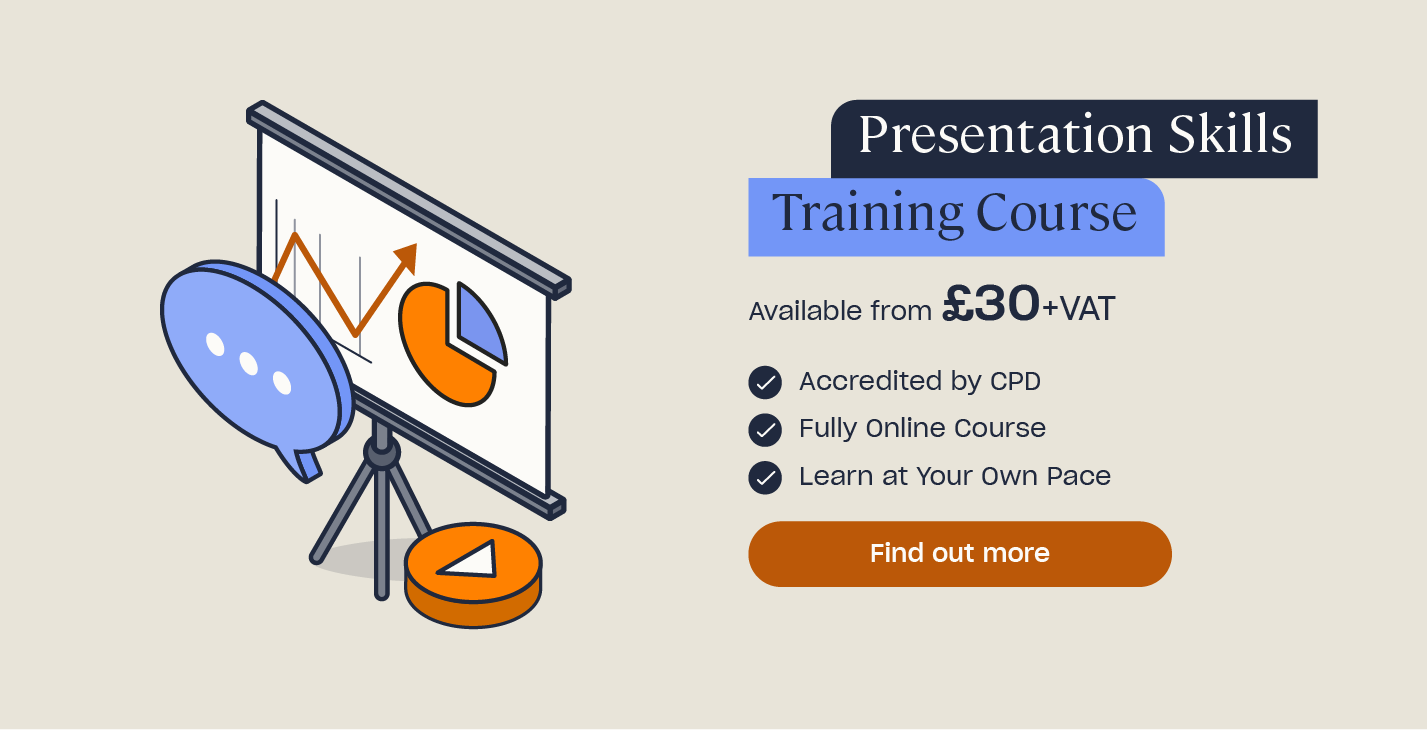
Post Author

You may also like

- Data, AI, & Machine Learning
- Managing Technology
- Social Responsibility
- Workplace, Teams, & Culture
- AI & Machine Learning
- Diversity & Inclusion
- Big ideas Research Projects
- Artificial Intelligence and Business Strategy
- Responsible AI
- Future of the Workforce
- Future of Leadership
- All Research Projects
- AI in Action
- Most Popular
- The Truth Behind the Nursing Crisis
- Work/23: The Big Shift
- Coaching for the Future-Forward Leader
- Measuring Culture

The spring 2024 issue’s special report looks at how to take advantage of market opportunities in the digital space, and provides advice on building culture and friendships at work; maximizing the benefits of LLMs, corporate venture capital initiatives, and innovation contests; and scaling automation and digital health platform.
- Past Issues
- Upcoming Events
- Video Archive
- Me, Myself, and AI
- Three Big Points

How to Create Slides That Suit Your Superiors: 11 Tips
When you’re pitching ideas or budgets to execs in your organization, you need to deliver slides that fit those particular people just right. This checklist identifies the key considerations.

- Workplace, Teams, & Culture
- Leadership Skills

Carolyn Geason-Beissel/MIT SMR | Getty Images
I recently interviewed 20 of my customers, all in senior roles at Fortune 100 companies, and asked them their biggest pain point in presenting to higher-ups and even colleagues. What I heard consistently was that it can feel like Goldilocks bouncing from one option to the next, testing to figure out what’s “just right.” Does the audience want deep reports? Sparse slides? Something in between? Like … what?
Teams often come to presentation meetings with vast amounts of backup content just in case an exec wants to take a deep dive on any given point. There’s often a struggle to anticipate every direction attendees might want to go. It’s frustrating, and it’s not efficient.
Get Updates on Transformative Leadership
Evidence-based resources that can help you lead your team more effectively, delivered to your inbox monthly.
Please enter a valid email address
Thank you for signing up
Privacy Policy
There are many ways to build slides. I’m not just talking about crafting them well versus poorly. I’m talking about all of the important decisions regarding how to organize them, how much text to use, when to lean into a chart, the best ways to use bullets and color, and whether to include an appendix with additional information. Before you make your next proposal or request of the executive team, use this list of 11 tips for your next set of slides as a guide.
Four Things You Must Have in Every Exec’s Slides
Before we drill down into the harder aspects, the ones where your executives’ tastes may vary widely, let’s quickly cover four aspects that you can consider the building blocks — the basics you should never proceed without.
Start with an executive summary. Begin the slide deck with a tight executive summary that follows a three-act structure. First, start with stating the current realities. Second, clearly state the problem or opportunity your idea addresses and its potential impact. Third, explain how your recommendation solves the problem or exploits the opportunity and the next steps you’re proposing.
Have a logical organization. The arc of the deck — the package from beginning to end — should make sense. If your audience reads only the headline of every slide, the order should be coherent and make most of the case for you. The content below each slide’s headline must support the statement made in the title. Remove everything that doesn’t support your point; as writers will tell you, you sometimes need to “kill your darlings” when you’re editing.
Begin the slide deck with a tight executive summary that follows a three-act structure.
Make it skimmable. Help your audience to quickly grasp the point without getting bogged down in details. Create a clear visual hierarchy. Guide the reader’s eye through the content: Use bold headings, bullet points, and numbered lists to break down information into digestible pieces. Highlight key takeaways or conclusions in a different color or font size to draw attention to these critical points.
Focus on concise insights. Succinct statements with clear insights are everyone’s jam. Every slide should serve a purpose and contribute directly to the decision-making process. Distill complex information. Don’t use 100 words when 20 words will nail it. If you’re having difficulty trimming, consider using company-approved AI tools to help you take out the fluff.
Five Preferences to Confirm With the Person You Want to Reach
Now we’ll delve into what your particular audience does and does not want. If you haven’t yet, start by asking the person you’re presenting to what they generally prefer. They probably know themselves well but have not been asked to articulate how they like to receive information.
Ask how dense is too dense. Some executives prefer detailed slides with comprehensive data. Others favor a more high-level approach. You’re weighing how to balance informative content with readability, ensuring that slides are not overloaded yet are sufficiently detailed to support decision-making.
Confirm the delivery format and timing. Some execs like information presented to them. Others prefer a pre-read of the material followed by a discussion. I always recommend our tool Slidedocs (I’ve written a free e-book on them), which are visual documents using both words and images. The templates help presenters organize their thoughts into a document for a pre-read or a read-along. They are designed to be skimmable and able to travel through your organization without the help of a presenter.
I’m a huge fan of pre-reads and prefer to use my time in meetings to ask questions and build alignment. If your audience didn’t review your material in advance, ask at the top of the meeting whether they would like you to present it or would prefer to read through it and then discuss it.
Find out how much data visualization they prefer. Charts, graphs, photos, and illustrations often communicate complex data more clearly than words alone. When execs can see what you’re saying, they often can better understand the impact of your idea. Does the exec want to understand exact numbers? Bar charts allow them to move their eyes across a series of specifics. Does the exec want to know the shape of a trend over time? Line charts can show the pattern. (See “Classic Charts Communicate Data Quickly.”) Some prefer charts with annotations that draw attention to what you think is the most important point. Others want to make their own conclusions from the data.
One of my clients, the CEO of a massive commercial real estate company, doesn’t want anything visualized. He prefers numbers, only in a table, and only in two colors — black and red. You might think this is archaic. But the fact that he’s clear to his teams about what he wants takes all the mystery out of how to communicate with him.
When the stakes are high, have a conceptual thinker help with diagrams and concepts. If you don’t have one on your team, and when it’s high stakes, find an internal designer to help you or hire one. You can’t afford to have the baby (your idea) thrown out with the bathwater (terrible slides).
Identify which details need spelling out. How well do the people you’re presenting to know the landscape and function of the company and products you’re talking about? For example, if your engineering team threw a slide into a deck about an issue that requires executive approval, do the execs all speak geek? Or do you need to explain the technology so that they will really understand the ask? Either eliminate internal jargon and acronyms or unpack those bits, especially if your proposal deeply involves expertise outside of the executives’ domain.
Ask whether appendices will be useful. When you’re organizing a presentation, you often troll data, read through complicated reports, and even hire external experts to figure out what’s best for the company. Do your execs want access to that supporting data? You can add a document to the end of the presentation as an appendix to show all of the data and source material. This allows the main content of the slides to remain focused and accessible while still providing comprehensive background information for those who want more.
Two Tips to Improve Your Presentation Skills
Getting materials in place is the biggest step. They will be your best tools for selling your ideas. But there are two extra areas to pay attention to as a presenter: how you handle questions and how you use every experience to improve.
Anticipate questions, and practice your answers. Before you have your meeting, gather a small team to challenge every point you make. Invite colleagues you trust to role-play as “a rapidly inquisitive exec” or “the doubting naysayer exec” so you are prepared to present your idea well. They’re gonna grill you, and practicing will help you remain unruffled when it happens.
Related Articles
Ask for feedback after the presentation. Establish a feedback loop with those you presented to. Ask what worked well and how you can improve. If attendees don’t have the time, find people who have had their ideas funded and talk to them about what they did that worked. Advice and some perspective will help you nail your performance even better next time.
Empathetically understanding your audience members and how they process information, whether it’s executives or peers, sets up your ideas for success. Clarity creates efficiency. When a presentation fits just right, you’ve given your great thinking the best chance of moving through your organization and having maximum impact.
About the Author
Nancy Duarte is CEO of Duarte Inc. , a communication company in the Silicon Valley. She’s the author of six books, including DataStory: Explain Data and Inspire Action Through Story (Ideapress Publishing, 2019).
More Like This
Add a comment cancel reply.
You must sign in to post a comment. First time here? Sign up for a free account : Comment on articles and get access to many more articles.

IMAGES
VIDEO
COMMENTS
How to give a good job interview presentation. Use these tips to deliver a presentation in an interview: Ask for guidance. Know your audience. Find a focal point. Tell a compelling story. Position yourself effectively. Take a positive approach. Practice your delivery.
Keep It Visual: Use visuals like images, graphs, and charts to convey your points effectively. Visuals can make complex information more accessible and engaging. Consistency Matters: Maintain a consistent design throughout your presentation. Use the same fonts, color schemes, and formatting to create a cohesive look.
A job interview presentation is all about selling yourself. Be confident, speak clearly, and make eye contact with the interviewer. Don't be afraid to promote yourself and highlight your achievements. This is your chance to really show the interviewer that you are capable and have the necessary skills to do the job.
Here are the steps you need to take to improve your chances at an interview presentation: 1. Research the company and the position ahead of the presentation. Before the date of the presentation, research the company and the position you are applying for. Doing this will help you determine the type of pitch to create for your presentation.
5. Scorecard. An essential part of any 90-day plan is building a report out. As you put your thoughts to paper, be sure to include the summary of actions, progress, and updates your manager will see each week. Design your report out in an easy to follow summary you can update each week. Think of it as a mini billboard of your accomplishments.
Try these steps for interview presentation success. 1. Know What You're Working With. As soon as you're asked to give a presentation, start by asking the hiring manager a few questions. Learn more about the topics you should present on, see how much time you'll have, and ask what technology, if any, you'll have access to.
2. Give your presentation a structure. Every interview presentation needs a structure that follows from start to finish. Your presentation's structure gives it a clean, defined look that, in turn, makes you seem efficient and organized. Also, when you have a structure, keeping track of your delivery is easier. 3.
Here are eight expert tips on how to make your ideas shine through preparing and delivering a world class presentation: 1. Brainstorm without borders. From the outset, it is important to set aside ...
55 Job Interview Presentation Topics. 10 Dos and Don'ts for Job Interview Presentations. 9 Tips on How to Deliver a Case Presentation Interview. Good Presentation For a Job Interview: 7 Key Aspects. Confidence; When making presentations, confidence is one quality you should never do without.
JOB INTERVIEW PRESENTATION (How To Give A Brilliant Presentation In An INTERVIEW!) EXAMPLE INCLUDED! https://passmyinterview.com/how-to-give-a-job-interview-...
Keep the interviewer engaged, make them think and question. This is as much about how you fit with them as them fitting with you. Think of your presentation as one half of a conversation that you will lead, rather than a monologue where you will bludgeon them with facts and statistics. You need to take your listener (s) with you, get them ...
Get your friends or family to interject during your practice sessions with provocative questions. By learning how to keep your composure, answer questions and get back on track, you will come across as a high-level communicator. 6. Nail the small details. After you've finished creating your presentation, work on perfecting the minor details.
Middle: tell them. End: tell them what you told them. Slide 1: Welcome the audience. Welcome people to your presentation by introducing them, saying what you will cover, assuring their comfort as observers, and asking them to leave all questions until the end. Slides 2-3: About me (education, past jobs, courses, skills).
Capture your audience's attention with an account that can only be delivered by you - making it unique and remarkable. Openly display your personality and values, enabling the employer to make a better informed selection decision - beneficial for everyone involved. 2. Use media. Starting your presentation can be the most difficult bit.
7. Practice (and Practice Again) The only way to know whether your presentation is the right length is by practicing. And, rehearsing will also build your confidence and make you more fluent for the real thing. Ideally, perform your talk for someone you trust so you can get some honest feedback.
First, start with stating the current realities. Second, clearly state the problem or opportunity your idea addresses and its potential impact. Third, explain how your recommendation solves the problem or exploits the opportunity and the next steps you're proposing. Have a logical organization.
3. Mastering your emotions. Even with thorough preparation, the experience of anticipating a job interview can feel both exciting and stressful. Mastering your emotions, as well as how your nervous system reacts, can offer several benefits: Staying calm and relaxed during the interview process.
1. Understand the problem. Be the first to add your personal experience. 2. Use a framework. Be the first to add your personal experience. 3. Generate ideas. Be the first to add your personal ...